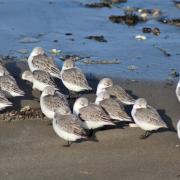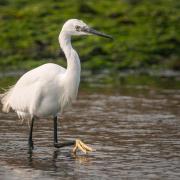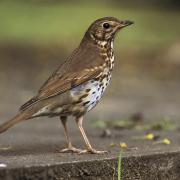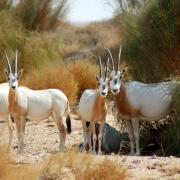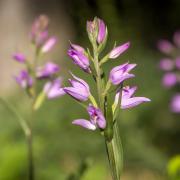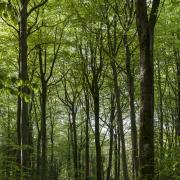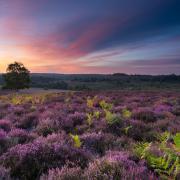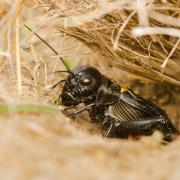Before the cold really sets in, many birds arrive in the UK from the north and east to spend the winter. HWT’s Bob Chapman identifies some to watch out for this month
Redwing
Similar in size and appearance to song thrushes, redwings are distinguished by the long creamy stripe above the eye. They like berries and can be seen in flocks in hedges in early autumn. Later, they look for worms and other invertebrates in open grassy fields or in the leaf litter in woodlands. If it gets really cold, they come into gardens to feed on fallen apples.
Blackcap
These plain, grey warblers with a contrasting cap – black in the male and brown in the female – are an increasingly familiar sight in our gardens in winter. Almost all those that spend the winter here do so in suburban gardens where berry-bearing bushes and bird feeders provide abundant food. In cold weather, blackcaps will eat apples and are reputedly fond of sponge cake.
Blackbird
Whatever the season, you can nearly always see a blackbird. Many birds stay here all year, but in autumn there is an influx from the east. Visiting birds often join flocks of redwings and fieldfares to feed on hawthorn and holly berries or eat fallen apples. They might also appear in our gardens, which leads to vigorous disputes with the locals.
Siskin
The increase in nyger seed feeders means that lots of us now see these pretty little finches in our gardens in winter. The males can be bright yellow with darker streaking and a black cap. Often very tame, it is sometimes possible almost to walk right up to them on a feeder. Siskins bring a touch of summery-yellow to brighten up even the dullest winter day.
Lesser redpoll
These small finches have become much more familiar to many of us in the last 10 years. They feed on tiny seeds, such as those of birch trees. Recently lesser redpolls have discovered nyger seed feeders and are now quite common in gardens, when you can appreciate their scarlet forehead, or ‘poll’, and the pink flush on a male’s breast.
Pied wagtail
Almost every car park, playground or playing field has a few of these distinctive birds walking around looking for food. Even though there may be several in the same area, pied wagtails like to have their own patch and will drive off rivals. At dusk, they change character and pack together in hundreds to roost, often in town centres on windowsills or in trees.
Waxwing
These exotic-looking, starling-sized birds are one of the stars among our winter visitors. This status is enhanced by their irregular occurrence, as years of scarcity are punctuated with invasions by large flocks. Waxwings specialise in eating berries, but arrive long after the thrushes have cleared the hawthorn and holly berries. They will eat the less favoured fruit of whitebeams and cotoneasters, and so are almost always seen in gardens or in ornamental plantings around industrial estates and supermarkets.
Brambling
Often in mixed flocks with their smaller cousin the chaffinch, these finches turn up in varying numbers each winter. They can be seen in late autumn feeding under beech trees on fallen seeds and come into gardens when food gets scarcer. Sometimes in March, large flocks gather at feeding stations, as they stock up for their return migration. By this time, the males look magnificent with black heads and orange breasts.
Where our winter visitors come from
Each autumn, millions of birds are on the move and as our summer visitors leave for Africa, many more birds arrive from the north and east to spend the winter here. Thrushes like redwings and blackbirds do not like snow covered ground and arrive from Scandinavia along with flocks of starlings and bramblings. Redpolls and siskins can come from the same areas, but many move down from Scotland where they breed in conifer plantations. Pied wagtails from Scotland and the higher ground of northern England head south and to lower ground for more hospitable winter weather. In years when the fruit crop fails, there can be invasions of waxwings from as far east as the Siberian taiga. Blackcaps tend to visit us from the south-east – many from Germany and surrounding countries.
Keep an eye on the Trust’s website www.hiwwt.org.uk and Twitter @HantsIWWildlife for updates throughout the winter.






